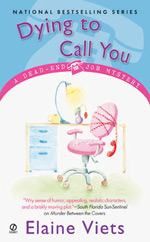Joan Coggin: The Mystery at Orchard House
Rue Morgue released Joan Coggin’s charming first mystery, Who Killed the Curate?, a few years ago, and has now satisfied Lady Lupin enthusiasts with the second volume, The Mystery at Orchard House. After reading the first book I was an instant convert. Lady Lupin Hastings, a young socialite who marries an older vicar, settles down to life in the country interspersed with visits from her city friends. Like many another gentle British humor classic – Nancy Mitford’s Love in a Cold Climate and E.F. Benson’s Lucia series spring to mind – the humor is almost organic and after a buildup, hysterically funny. I was worried that after the delights of the first book the second one would be a let down, but this is far from the case. It may even be funnier.

